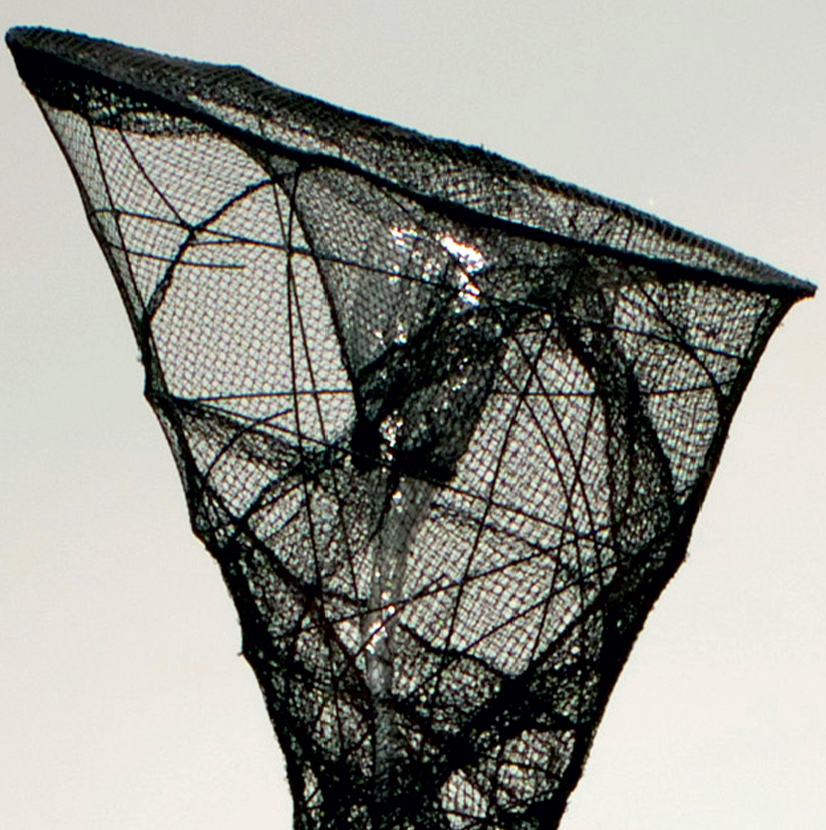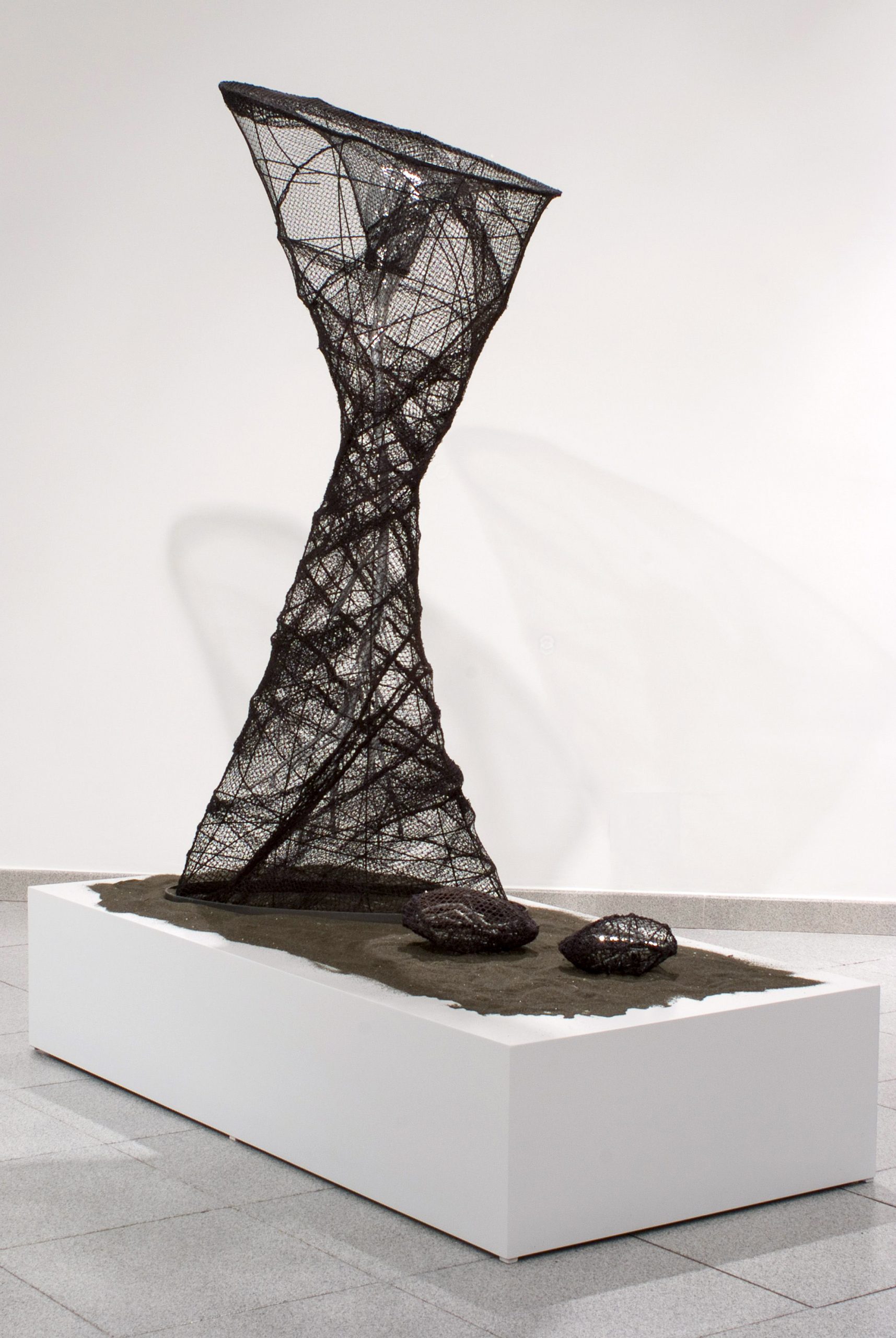THE COMEL AWARD FINALISTS 2012
Anna Crescenzi
Sarno (Sa) – ITALY
www.annacrescenzi.com
www.annacrescenzi.com

THE COMEL AWARD FINALISTS 2012
Anna Crescenzi
Sarno (Sa) - ITALY
www.annacrescenzi.com
www.annacrescenzi.com
BIOGRAPHICAL NOTES
The sculptor's thought is deeply rooted in humanism, connecting the past, present, and future, history and current events, invention, and social reality. On a formal level, she remains faithful to a realistic representation of images without losing sight of the possibility of abstract elaboration, serving more as a vital sentiment than a formal necessity. She "tells" about the relationship between man and nature by incorporating natural elements into her works and reusing uncommon materials in her plastic work. She lives and works between Naples and Sarno, born in 1952. She has taught Plastic Disciplines in Art High Schools and since 1974 has been actively participating in exhibitions and events in Italy and abroad. From 1979 to 1997, she engaged in theater-school activities and contributed to the construction of theatrical machines for street performances in various events. In 2001, she founded the Laloba artistic group, promoting artistic events, sculpture workshops, installations inspired by the interpretation of the territory, performances, scenography, video installations, and artist videos. In 2001 and 2003, she was invited to an International Art Workshop in Slovenia, where some of her works remain on permanent display in public spaces.
The landslide that struck her land in 1998 triggered a creative phase that manifests in bodies-territories standing against black backgrounds, with a material reminiscent of mud or earth, fragmented and wounded bodies, or rather, injured in their integrity with a central opening that, in some cases, is "sewn" together with natural elements. Even in sculptures, these tears seek "breath" with space. In 2005, Taide editions published a catalog of her works with a critical text by Ada Patrizia Fiorillo, documenting the solo exhibition at the Monumental Complex of Santa Maria del Rifugio in Cava de’ Tirreni (Sa). On this occasion, a folder of two etchings and aquatints titled "I colori del nero" (The colors of black), with a critical text by Enzo Di Grazia, was published by Il Laboratorio di Nola.
Ada Patrizia Fiorillo writes: (...) An exercise that the artist experiences in close connection with the material, assuming its intrinsic qualities while pursuing a representational will that goes beyond the contingent. This is the case with those figures molded from a mixture of clay, plaster, and other elements, casts of muddy matrix, acquired in a - as Franco Cipriano aptly says - "deformed classicism" that creates a new visual order. They belong to a temporal context, with references to broader contexts, but also to nature since those forms, born from nature, live in the evident transformation of artistic materials. (...) In 2005, with the Laloba artistic group, as part of the "Villaggio dell’Arte" (Village of Art) participatory art events, involving five municipalities of the Matese region and international artists, she created two large permanent installations in the municipality of Capriati a Volturno (CE).
In 2010, she was invited to the itinerant exhibition "Seven" and created the series of sculptures titled "Terramara," inspired by the seven deadly sins. A structure in iron resembling an insect, connected to the earth with its slender legs and a cocoon-like body that, from time to time, with each sin, fills up with symbolic elements reflecting the sin of the ongoing exhibition. This series of works marks her subsequent research, and the lumpy material of previous works gives way to a search for lightness and transparency, a recovery of ancient manual techniques combining iron structures with stretched and sewn fabric and successive additions with common materials, fragments, objects, things... a recovery of drawing that gains depth and meaning through successive layers... Her reflections also open up to new inspirations, considerations about society and the environment, and the function of art, which can only be a stimulus for new thoughts and ideas, leading to greater awareness of the role each individual plays in shaping the world we live in.
ARTWORK IN CONTEST

METEORE (2012)
SCULPTURE - terracotta iron, aluminum, fishing net and sand
cm 150 x 150 x 70
With 'Meteore,' Anna Crescenzi starts from scientific data: by detecting the decay of aluminum contained in meteorites, which are bombarded by cosmic rays before reaching the Earth, the duration of their presence on our planet can be determined. The artist thus presents an unusual space-time journey, a path of cosmic, primordial suggestions that link the universe, time, humans, and aluminum as one. Within a large hourglass woven like a net that retains and traps, a meteor, suspended as if in zero gravity, is slowly disintegrating, producing sterile black dust. It has a shape reminiscent of an upside-down tree, aluminum, cosmic, total, a catalyst, an energetic pivot, a vital source, but it is reduced to the bone, to the skeleton. It is burning and slowly disintegrating. Two other meteors lie on the bottom: they have already fallen, among dunes of leaden ash. Decay is underway. The hourglass, symbol of man's vain attempt to capture Kronos, is a symbolic, unreal but profoundly dramatic, mournful reconstruction of a microcosm reaching exhaustion, emptied and arid, where the countdown towards a slow but irreversible process of disintegration and self-destruction has been triggered. Everything is lost unless one tries to recover the wonder of existence, the sacredness of being and doing, the care in giving and receiving: "What I hold will vanish with me, but what I have given will remain."^1 Anna's time is dramatically suspended, held, like a bird in a cage, or a fish in a net, where private grief becomes a universal lament, the intimate anguish of loss becomes cosmic acceptance. And the silence screams, the unacted action. It is the time and space of detachment, not escape, of (re)collection, meditation, prayer. It is the time and space of endless waiting, of the arid earth calling for rain, the time of listening and the hope that a glimmer will flood the night with light, a song will resonate with life in the silence, a heart will water the world with new Love.
*1 Translation of "Sparirà con me ciò che trattengo, ma ciò che avrò donato resterà," which is a quote from the text and its source is not explicitly mentioned.
AWARDS
COMEL AWARD FINALIST 2012

